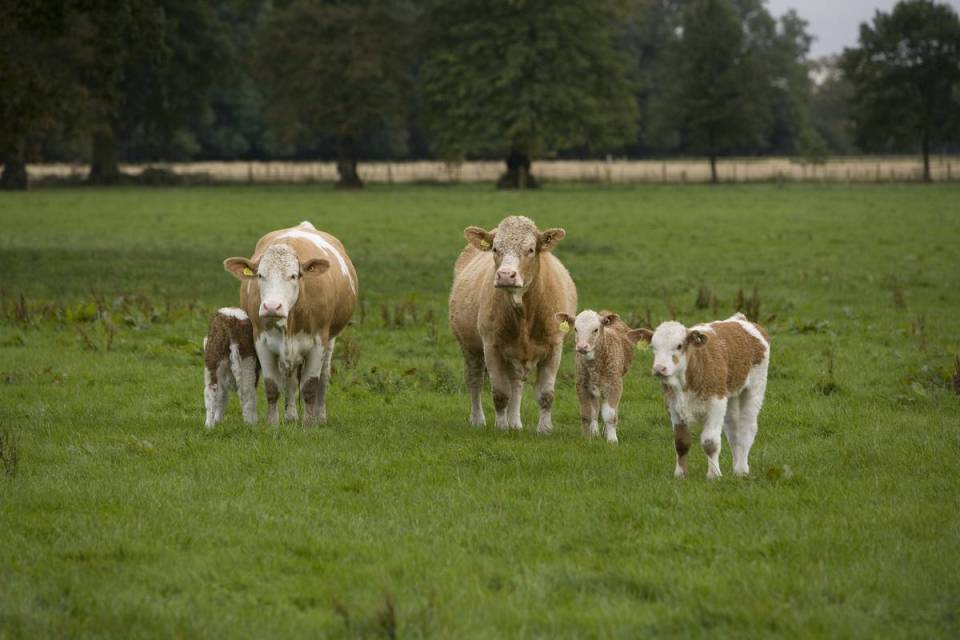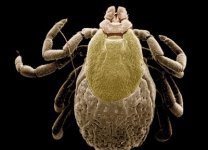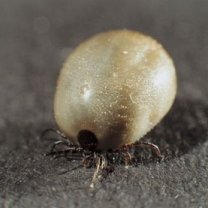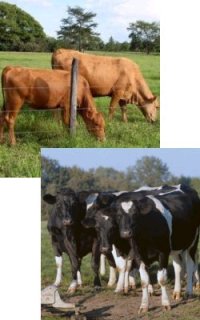
Babesiosis
A page about redwater (Babesiosis) in cattle, its cause, diagnosis, treatment and prevention
Introduction
Babesiosis of cattle caused by a blood borne parasite called Babesia divergens, is a disease most commonly encountered in rough pasture and is not present at all on many farms in Ireland. Disease outbreaks can result in severe production losses, mainly due to weakness and mortality.
Aetiology
Bovine babesiosis (redwater) is caused by the tick-borne blood parasite, Babesia divergens. Therefore two components are involved in transmission – presence of ticks and infection of these ticks with the babesia parasite before they attach to the animal and transmit disease. The organism can also infect immuno-compromised humans, causing medical emergencies.
Epidemiology
Prevalence of disease is influenced by the following:

a) Factors that influence infection of the vector ticks
The blood of infected cattle is the reservoir of infection. Success of infection in ticks depends on the quantity of parasites taken in by the feeding tick, especially in the last 24 hours of life. The organism penetrates the ticks eggs and are passed into an unpredictable proportion of the tick larvae. For successful transmission of Babesia, development of the tick (Ixodes ricinus) must occur in parallel. Infection rate in the bovine is a function of the number of ticks that attach as well as the proportion of ticks that are infected with Babesia organisms. Adult ticks lay approximately 2000 eggs which fall of the animal and hatch to larvae. Larvae attach to a second host (often small mammals) and develop to the next stage (nymphs) to again fall off the host and moult to adults. Adults attach to the host bovine animal and complete the life cycle.
Ticks have very specific environmental requirements of humidity (> 80%) which limits its distribution to areas with an average annual rainfall of 100 cm or more. I. ricinus can be found in the damp micro-environment at the base of permanent herbage, mainly in woodland, rough hill grazing, and poorly-drained low-lying land. Well-maintained permanent pasture seldom provides adequate habitat conditions for ticks, but unimproved undergrazed pastures and adjacent to hedges may represent foci of infection. The feeding activity of adult ticks appears to be a more important risk factor for babesial infection of cattle than other life cycle stages.
Disease occurrence typically has a two seasonal distribution, with a peak between April and June and another peak from August to October. In spring, at maximum air temperatures of 7 to 10°C, overwintering nymphs and adult ticks become active. The first cases of babesiosis are usually observed 2 weeks later; there is a delay related to host seeking, tick attachment, and incubation of the disease. Ticks that fed the previous spring may contribute to the autumn peak of babesiosis, but most autumn cases are caused by nymphs and adults that fed as larvae and nymphs the previous autumn and overwintered as engorged stages. Tick larvae are most active in the time between the spring and autumn redwater cases.
b) Factors that affect infection and immunity to Babesia in cattle
Calves are immune until approximately 9 months old and if infection occurs prior to this time, it is likely that this immunity will be maintained. However, an absence of challenge prior to this age may lead to the development of susceptible animals. In older animals immunity is maintained by continuous challenge from infected ticks. Immunity is not lifelong and in the absence of challenge, it is possible for animals to develop disease on a subsequent occasion. The advent of contract rearing of dairy replacement animals on grazing land that may not have been used for some time (rough grazing) has increased the risk of naive animals becoming exposed to redwater in recent times.

Clinical Signs
Acute babesiosis (Redwater) generally runs a course of approximately one week. The first sign is fever which persists through the acute phase, and is accompanied later by anorexia, increased respiratory rate (particularly if animals are moved), muscle tremors, anaemia, pipe-stem diarrhoea and weight loss. Animals are often anorexic (hollow flanks). Haemoglobinemia and haemoglobinuria (Reds to port wine-coloured urine) occur in the intermediate stages. This may be followed by jaundice. Constipation commonly develops in the later stages and animals may become recumbent (unable to stand) due to weakness. Death often follows recumbency especially in cold climatic conditions where shock is exacerbated. Late-term pregnant cows may abort, and bulls may undergo temporary infertility due to transient fever.It can take a number of days for the red discolouration of urine to clear. Animals that recover from the acute disease remain infected for a variable time though no clinical signs are apparent during this carrier state.
Photo of tick courtesy of Prof H Mehlhorn Heinrich Heine Universitat Dusseldorf

Diagnosis
Clinical signs of babesiosis in conjunction with a history of known risk factors are indicative of redwater. However, laboratory tests are required for a definitive diagnosis.
Tests to detect the parasites in blood
This can be done by simply examining Giemsa- or acridine orange-stained blood smears. The parasite may also be detected by PCR, conducted by specialist laboratories.
Antibody testing
The Indirect Flourescent Antibody Test (IFAT) and enzyme-linked immunosorbent assay (ELISA) are the most commonly available tests. This diagnostic test option is fraught with risk.The relationship between antibody titres, the presence of parasites, and the state of protective immunity is not clear as antibodies may persist for long periods after the disease has cleared, antibody titres may be observed in the absence of protective immunity and negative test results can occur in the presence of parasites or after the onset of immunity and parasite-freedom.

Control
Control of babesiosis is based on two equally important aspects:
- Tick control: While land drainage and improvement are obvious choices, they may not be the most practical approach to control for many farmers. A useful approach is the application of synthetic acaricides to cattle as pour-ons with high residual activity during the periods of greatest exposure. Studies in Ireland have shown that synthetic pyrethroid pour-ons flumethrin and deltamethrin protect cattle from ticks for 2 and 3 weeks, respectively.
- Chemoprophylaxis: Imidocarb, the only chemoprophylactic on the market, provides protection from clinical disease for up to 4 weeks but allows a sufficient level of infection for immunity to develop. This strategy is highly effective if the host is guaranteed to be bitten by an infected tick during the period of cover. Then, acquired immunity takes over from the drug protection. Difficulties arise if infection is sporadic or if very high doses of imidocarb are administered, as this can eliminate parasites prior to onset of immunity. Different dosage regimes are applied depending on whether treatment or prevention is being sought. For further information on this product in Republic of Ireland please click here while for Northern Ireland product related information please click here. The product may only be prescribed by your veterinary practitioner from whom advice should be sought. Further information is available on request.
